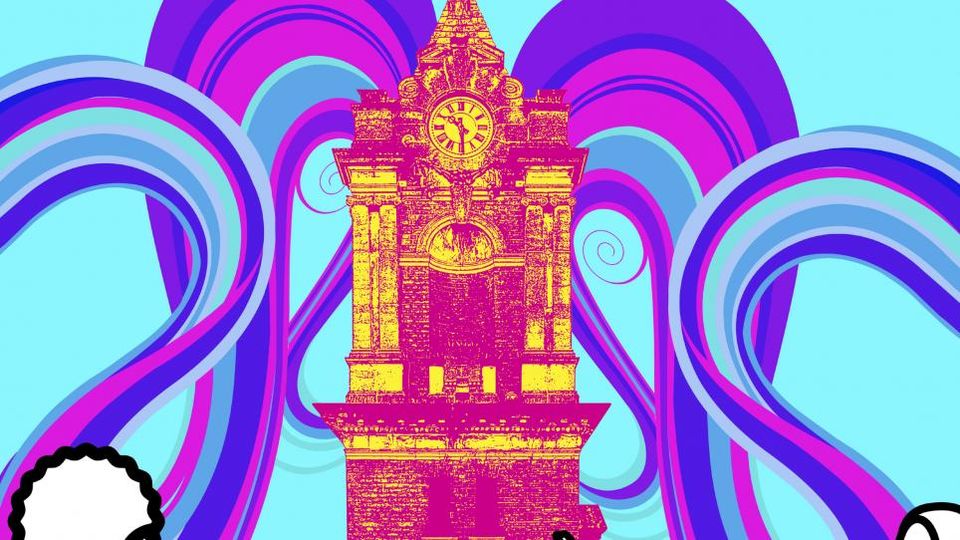A Fictional Meeting on Bexleyheath Broadway

A cold winter afternoon. Snow is thick and Bexleyheath Broadway is filled with young people who have just come out of school.
This is a fictional story of an imagined meeting between two young women, passionately proud of Bexley.
One works for Bexley Council. Let’s call her Kai.
The other is a school student. Let’s call her Dee.
Dee is listening to alternative rock music from her phone. The left earpiece is plugged into one ear but you can hear the music faintly emitting from the right earpiece dangling around her neck. Both are waiting at a bus stop on Broadway, observing an argument. Two adults are arguing and people are gathering, curious.
For the shopkeepers and shoppers, the Broadway is one of the most important places in Bexleyheath. The pedestrianisation of the Broadway has made a big difference to the way people interact in this place. In part, this pedestrianisation has made it possible for students to use the street as a social area for interactions. Disruptions in the Broadway are quickly attributed to the students’ presence on the Broadway and Dee is aware that even though this argument wasn’t started by students, this will not change the shopkeepers’ and shoppers’ impression that it will be students. The argument has brought attention to the underlying tensions of this place - there is a palpable shift in atmosphere.
The song changes and it is a tune that Kai recognises. She nods her head in rhythm with the drums and smiles. Dee offers Kai the right earpiece and Kai accepts. They listen to this song together, heads bobbing in unison with a smile. When the song ends, Kai says she used to play in an alternative rock band before she moved to Bexleyheath. Dee invites her to join them at the pubs where the alternative rock community gather regularly. ‘Bexley is all about the people. It’s a mix of crowds’ and these places ‘gets the music community together’, Dee says. They talk about their favourite music places in Bexleyheath and it is clear that Dee is aware of how students are blamed for the fights on the Broadway even though she doesn’t consider herself part of that crowd. There is a growing mutual respect between Kai and Dee. Although they disagree on the influence popular music has had on the quality of recent alternative rock songwriting, each young woman appreciates how the Broadway is that intersection where people from different generations and socio-economic circumstances could interact with each other differently.
Then the bus comes. Dee apologises for having to interrupt their conversation and hurries onto the bus. Kai is mistaken for a teacher and is reprimanded for not getting her students onto the bus quickly. As the bus drives away from the bus stop, Kai and Dee wonder what it would be like to understand Bexley through the other’s everyday interactions with Broadway. Dee wonders what it feels like to be invited to linger in the shopping malls. The Kai admires the resourcefulness of alternative rock community in Bexleyheath and wonders about places along the Broadway where shared interests might encourage more meaningful intergenerational interactions.
Although place is often conceptualised in terms of discrete architectural units like a home, or workplace or a favourite cafe, geographers Hugh Matthews, Melanie Limb and Mark Taylor suggest that ‘some “streets” become places…where young people can gather to affirm their sense of difference and celebrate their feelings of belonging…these places are “won out” from the fabric of adult society, but are always in constant threat of being reclaimed’ (Matthews et al. 2000: 55). The streets are often appropriated as a place for performing different personas as young people explore different interests and seek out different groups (beyond the home and the school) in their search for a sense of belonging. Some groups offer fertile grounds for identity formation where young people feel at ease. The streets can offer a place for young people to meet and reinforce the relationships that strengthen this sense of belonging. Young people might therefore develop strong place attachments to a street, or a part of the street that functions as a social meeting place.
In this sense, Bexleyheath Broadway might be understood as a layered place, enjoyed by different groups of people and serving different functions at different times of the day. Broadway functions as the main shopping high street for adults until mid-afternoon where students are dismissed from school. As students spill out of school, Bexleyheath Broadway becomes a social meeting place offering brief opportunities for interactions between young people from different schools. At this point, there is a tangible shift in feelings associated with the Broadway and many adults choose to leave Bexleyheath Broadway to avoid this after-school crowd.
Although this portrayal of the streets as a contested public space tends towards describing the relationship between adults and young people as antagonistic, this need not be so. There is a common desire on all sides for activities that might provide opportunities for place-care and encourage intergenerational interactions that deepen individual understandings of place. Some young people interviewed by the Performing Places Bexley team at informally organised focus group sessions suggested dance competitions or games that provide opportunities for young people ‘to show we are good or talented’ and ‘be given roles of responsibility’. With the first community workshop beginning on 11 May 2018, watch this blog (and this website) for updates on the many weird, wonderful and curious opportunities to re-experience Bexleyheath Broadway.
Note: This blog is written by Adelina Ong, 18 May 2018
References
Matthews, H., Limb, M. & Taylor, M. (2000) ‘The ‘Street As Thirdspace’’ in Valentine, G. & Holloway, S.L. (eds.) Children’s Geographies: Playing, Living, Learning, Oxon, Routledge: 54–68.
